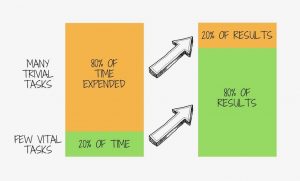Starting my Professional Organizing business was one of the smartest moves I’ve ever made. It has given me the opportunity to travel to many different neighborhoods in the Tri-State area and then some; traveling to NY City and to Winston Salem. Once a month I find myself across the street from the beautiful Philly Art Museum and, at other times, right across from City Hall.

Meeting people from all walks of life, in diverse living arrangements and hearing their stories has been a gift to me. My clients include healers, artist, nurses, psychologist, equestrians, entrepreneurs, writers and Dragon boat racers. Over the course of seventeen years I have watched children grow up and parents pass. I have organized their toys and helped plan for funerals.
Every day I am in a different situation.
This week I organized paperwork for my very first client and, on another job, found myself building shelves in a garage – yes, it was cold! I have clients who love to buy clothing – luckily I have retail experience and love to organize closets with all the new arrivals. Some days I am organizing kids toys for young families and, at other times, I’m clearing a basement that is packed solid with everything you can imagine. Yesterday I worked in a business office organizing their promotional materials. I have a close relationship with some of my clients. We sit, talk, laugh and eat while organizing or processing paperwork.
I am often cold or hot, dirty from dust or watchful of the occasional critter – including the family dog eating my lunch. And yet I say it is the perfect business for me. It’s a service I am giving to families and individuals who just need a helping hand keeping their spaces neat, clean and organized. Together we come up with the best solutions for their life & work style in their spaces. It’s not unusual for me to say “I was dreaming about this room last night and I have an idea”. Organizers are full of ideas and solutions. We have studied books, have taken classes, workshops and have supported each other when looking for remedies to make our clients comfortable, safe and happier in their homes.
I am so grateful for all the lovely people I have met over the years and excited to meet new people I can help in the future. If you have any interested in being of service to others I highly recommend this profession. I have gained so much from my clients and every day I feel blessed for this wonderful opportunity.

 Have you ever gotten to the end of your day wondering what (if anything) of value you actually accomplished? If so, it may be time to pull out the 80/20 Rule!
Have you ever gotten to the end of your day wondering what (if anything) of value you actually accomplished? If so, it may be time to pull out the 80/20 Rule!
Professional organizers often apply the 80/20 Rule (a.k.a., the Pareto Principle or the Law of the Vital Few) to decluttering. For example, in a closet, determine the 20% of clothes you wear 80% of the time, purge the 80% of clothes you seldom or never use, and – voila! – you have space for clothes more like your favorite few.
The principle also applies to time. Most of us accomplish 80% of our best work in just 20% of our time, and fritter away 80% of our time doing…what? The key to really accomplishing our goals, to really making an impact, is to focus on the 20% of things we are really good at.
Determining our best 20% when it comes to clothes is pretty straightforward: pull everything out of the closet and start sorting: things I love (or not), things that fit (or not), things that make me look great (or not), etc.
But how do we determine our best 20% when it comes to work? Claire Diaz-Ortiz, in the book Design Your Day, suggests this similar pull-out-and-sort activity to find out:
First, get two pieces of paper. At the top of one write “Big Wins” and on the other write “Activities.”
On the “Big Wins” paper, list things that you’ve done in the past few years, personally or professionally, that have brought you the greatest joy, that have made you feel most alive, that have made you feel like you were in the sweetest of sweet spots. These could be things that happened just once, or continuing things.
On the “Activities” paper, list absolutely everything you do on a regular basis – fun or not fun, significant or not significant, necessary or unnecessary, whatever. Then sort these items into three categories: Things Only I Can Do, Things Someone Else Can Do, and Things I Should Stop Doing. (It might help to rewrite your activities on a fresh piece of paper with three columns headed with these categories.)
Next, cross-check. Things that appear on both your “Big Wins” list and your “Things Only I Can Do” list are your best 20%!
Now, set priorities:
As Diaz-Ortiz says, “ultimately, this activity is a mind-opening way to see where your time and work is really moving the needle and where you’re just running on the hamster wheel to stay busy.”
Let 2018 be the year where you focus on the few vital tasks that best get you to where you want to be.
80/20 your 2018!
One of many things I love about the holidays is that it brings family, friends and people together. I’m appreciative of all that I’m blessed with and love blessing others. My most favorite is spending time with those I love and cherish. We hosted Thanksgiving at our home this year. We stood in a circle and talked about what we are grateful for and the importance of leaving a legacy for our young generation.
Every year we adopt a family in need. It’s so exciting to see their smiling faces filled with gratitude. I tend to notice people are more kind and friendly during the holiday season. Wouldn’t it be nice if we can stretch that kindness all year round?
This year I decided to be a little more creative with gift giving. When giving a gift I think it’s really important to know something about the person you are giving the gift to. For example, their favorite color, books they read, tech/kitchen gadgets, journal books, spas or help organize a particular space in their home.
One of my favorite things to do is create a beautiful tablescape. This year I’m creating a beautiful table scape for my sister and best friend. They are so elated. The best part is that I’m using items they already have and gifting the other items. Sometimes it’s the simplest things that people appreciate and love.
Hope your holidays are filled with love, joy and peace. Be Creative. Be Grateful. Be Kind.
The holidays are upon us! There’s so much to keep track of and so many things to do! How can this wonderfully busy time of year feel less stressful? Make a list! Or several!
I love lists! Just the act of writing a list helps me to feel like I have a clearer direction. A checklist is a concrete tool to help you empty your brain of all the things you need to remember…and then to prioritize them.
There are even more things to do and to remember than usual. I use different lists for each facet of the holidays.
If you like writing lists out on paper, keep one folder or notebook as a central location to record your plans. If you prefer going paperless, keeping documents stored on a computer or in a note-keeping system like Evernote is a convenient way to keep an ongoing record over the years.
The following are types of lists to help you stay better ordered as the activities and tasks fill your schedule:
Menus: Write out a list of the entire meal from appetizers through desserts, including those items being provided by other guests. That way, you have a comprehensive overview of the full meal and can fill in the gaps if there are any. Don’t forget to include drinks, paper products, flowers and table centerpieces.
Shopping list: Go through all the recipes you will be preparing and write out every ingredient into a grocery list. The key here is to write the food items according to sections in the grocery store. It helps dramatically when your list is ordered so you don’t have to revisit different sections of the crowded store.
Tasks: Write out all individual tasks required to prepare for the holidays so you can clearly see the extra demands on your time such as: cleaning the house, decorating, shopping for gifts, wrapping, and mailing gifts (by a designated date).
Holiday cards: Keep a master address list that you can update each year. Many people keep it in a format on their computer to print address labels. I like to sort names according to groups: family, friends, neighbors, co-workers, etc.
Gifts: Keep a list of all gifts you plan to purchase according to each person. In the margin, record the store or online vendor and price. You can plan your shopping route according to the stores listed.
Accessory shopping: While shopping for gifts, there are often other details easily overlooked. Designate a master list for details. For example, as you decorate your house or plan your holiday party, keep one list for all those particulars such as a replacement string of lights, a new set of holiday placemats, etc.
A Final Step
Your Calendar: Look through your lists regularly and write tasks into dates on your calendar in order to keep track of what is being accomplished. Write in your planner in pencil to make easy alterations or use an online calendar to easily move tasks around.
Remember: this is a busy time of year. Everything takes longer than expected. In the end, we may need to let go of a few tasks.
The ultimate goal is not to feel harried by the time the actual day arrives so you can enjoy the celebration with those you love!
 If being organized is not how you were raised but you’ve started to become more orderly, you may already know: it takes time getting used to “being organized.”
If being organized is not how you were raised but you’ve started to become more orderly, you may already know: it takes time getting used to “being organized.”
I learned this with a new client: Kim (not her real name) has struggled all her life to maintain a neat space. Her efforts go in waves and she has managed to live a really rich and creative life — but it hasn’t been easy. She’s lost a few things along the way. Paid her share of late fees for bills and penalties for misplaced parking tickets. And wasted time rewashing clothes after the dirty commingled with the clean.
When she was ready to stop this chaos…she called in a professional organizer.
She had 3 areas to organize:
• her wardrobe and bedroom
• her living room – including a desk area
• her hallway which had become an over-crowded storage space
We started in her bedroom because the mess was affecting her sleep. After 3 working sessions we had sorted through all of her clothes, cleared every surface (including the floor) of anything that didn’t belong, rearranged her dresser drawers and closet with zones for each type of clothing she needed in her life.
Moving on to the living room, Kim sheepishly told me a “funny” story about her missing slippers. The one constant in Kim’s life had been lots of weekends away to cabins with friends. In preparing to pack for one such weekend, she described how she had scoured her apartment looking for her slippers.
She checked ALL of her usual spots: under the coffee table, in the bathroom, kicked under the hallway table, in a pile behind the couch, tucked under her bed, tossed into a corner by her cat…she couldn’t find them anywhere.
She left for her weekend sans slippers in a bummed mood.
As soon as she got on the road to the cabin, it hit her. She couldn’t help but laugh out loud. Her slippers were right where we had left them — in their new home. They were in the bottom “bay” of the hanging shoe organizer we had installed in her closet.
It was a funny lesson to us both, that getting organized takes some getting used to! The motto of Kim’s story is: It’s easy to find what you need when you need it…when it is right where you left it.
 One of my favorite pieces on growth and development is a YouTube video I came across about a year ago. The interview was given by Rabbi Dr. Abraham Twerski on “how a lobster grows.” You may be asking, what’s the punchline? It almost sounds like a joke: “So there’s this rabbi and a lobster”… however, this short lecture is one that I have sent to colleagues and friends. I have shared it with family…I have even shared it repeatedly with my daughters who, as young women entering their teenage years, are starting to experience many types of growth. Unfortunately, growth often causes discomfort.
One of my favorite pieces on growth and development is a YouTube video I came across about a year ago. The interview was given by Rabbi Dr. Abraham Twerski on “how a lobster grows.” You may be asking, what’s the punchline? It almost sounds like a joke: “So there’s this rabbi and a lobster”… however, this short lecture is one that I have sent to colleagues and friends. I have shared it with family…I have even shared it repeatedly with my daughters who, as young women entering their teenage years, are starting to experience many types of growth. Unfortunately, growth often causes discomfort.
Dr. Twerski talks about the lobster being a soft, squishy animal that lives inside a hard shell. It is protected, but stunted. The hard shell – its current state… its “normal” – actually prohibits its growth and development. As the animal grows inside the shell, it becomes squeezed, uncomfortable and stunted and finds itself under a tremendous amount of stress.
Personally and professionally, when we begin to feel stress, it is largely due to an uncomfortable situation in which we find ourselves. What causes that discomfort or stress? Many times individuals or organizations believe stress is a result of external forces exerting pressure, when really the discomfort is a result of the individual’s, or organization’s growth that is being stunted. So how does an individual or organization alleviate discomfort? Does it stop growing? Become static? Being static leads to certain death. Lack of growth means that the rest of the world is changing while the individual or organization is not. Does it mask the stress? Masking stress only compounds it and makes it worse – procrastination is the enemy of growth and productivity.
Therefore, the lobster is forced to break out of its shell and expose its vulnerability to the world… and ultimately grow. Once the lobster is exposed and opens itself up to the newness around it, it is able to develop, become stronger and more resilient and grow a new, tougher outer shell. Similarly, individuals and organizations alike experience some stress during a period of growth. It forces an analysis of current situations and change.
The lobster analogy for growth and development is universal. It is applicable to individuals and organizations alike. Whether it is big or small, change can be difficult. However, the inevitable reward for embracing change is incomparable. As the NAPO blog investigates the topics within this theme of “growth” it is a great opportunity to take a step back to identify areas of potential growth. Opportunities to develop and areas for improvement help the individual, the organization or even the nation, illuminate pathways to success.
Courtesy of Kahra Buss, Membership Communication Manager, NAPO